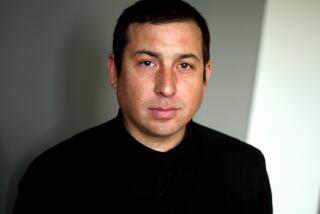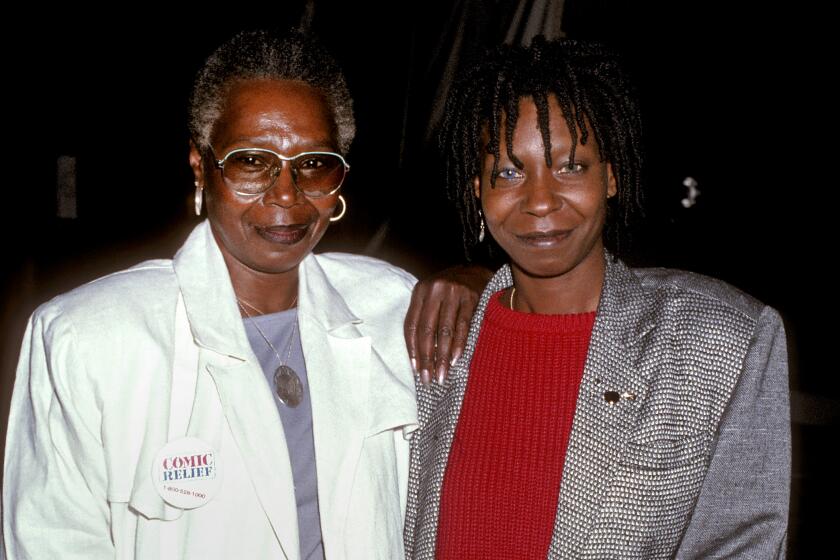Book Review: ‘Day for Night’ by Frederick Reiken
Day for Night
A Novel
Frederick Reiken
Little, Brown / Reagan Arthur Books: 326 pp., $24.99
Early in Frederick Reiken’s third novel, “Day for Night,” Timothy Birdsey, a 23-year-old bassist-mechanic-river guide, explains a song from his band’s playlist. “What it’s about,” he tells us, “is the idea that we’re much closer than we think to the random people we see on any given day, that everyone in this world carves out a little groove and that although you may think your world is large you rarely venture far outside of this groove.” This idea is at the heart of Reiken’s ambitious novel, in which a seemingly random constellation of characters travels in prescribed orbits while others step out in hopes of finding what has been lost. In both cases, the characters end up being closer to one another than we might expect.
Much as Russell Banks does in “The Sweet Hereafter,” Reiken tells his story via a series of first-person perspectives. In Banks’ novel, the chorus of voices examines how a tight-knit community unravels after children are killed in a school bus accident. For Reiken, too, a tragedy provides the nexus, but the event here reaches far beyond the boundaries of a single town. At its center, rather, is the Holocaust, or more specifically, the Five Hundred Jews atrocity of August 1941, in which 500 Jewish intellectuals in Kovno, Lithuania, were led to believe they had been selected for archival work only to be taken outside the city and shot. The question of whether two men managed to escape the shooting provides the spine of “Day for Night.”
As such, this enterprising novel traverses a broad geographic canvas: Florida, Utah, New Jersey, California, St. John’s Island, New York, Massachusetts and the Negev desert. Reiken also takes on a large cast of characters (10 altogether), who include an FBI special agent and an octogenarian in an assisted-living facility. It’s an ambitious project, and moving from locale to locale and individual to individual certainly makes for a compelling read. At times, though, this continual leapfrogging can be jarring, because the connections between people aren’t always apparent.
Reiken is at his best when drawing imaginative, poignant moments. Near the end of the opening chapter, Beverly Rabinowitz — a 49-year-old pediatrician on a trip to Florida with her boyfriend, David, a marine biologist in remission from leukemia, and his teenage son, Jordan — sits on the bank of a river where a carousel is partly submerged, watching propeller-scarred manatees swim beside its sunken roof. The sight reminds her of a walk she took with her father, Jonah, in 1941, just before she fled with her mother to the United States. “The moon was casting its glow over the fields that ran beside the river,” Beverly recalls. “I had the sense that the bright light was clinging desperately to the earth. And for one purpose — to remake yesterday’s day, which, with a five-year-old’s capacity for literalization, I believed might happen if the full moon glowed bright enough.” The image of the moonlit carousel plays throughout the narrative: Half the story is above the surface; the other half underneath.
Five chapters later, Reiken introduces Jordan’s viewpoint. (As he has demonstrated in two earlier novels, “The Odd Sea” and “The Lost Legends of New Jersey,” the author is particularly adept at writing from the perspectives of young adults.) Jordan is spending a month on St. John’s as his father studies an emerald green coral that kills other species to spread along the reef. While there, he learns that David, a single parent, may be sick again and that he has arranged for Beverly to adopt Jordan upon his death. After discussing these possibilities, father and son sit together for a while.
“The breeze picked up and the surface of the swamp began to ripple,” Jordan reflects. “A lone pelican swam in through the entrance to the mangroves, and in a low voice my father said, ‘The ocean.’ He and I sometimes said this to each. It was a code, although we’d never really said what it was code for. I nodded and watched the pelican. For a short while we sat in silence. Then we jumped back into the smelly water and kept looking for juvenile sharks.” Here, Reiken skillfully allows the sadness to expand into silence rather than forcing anything.
For the most part, “Day for Night” is strong and steady, a powerful, if wildly elaborate, narrative. In the end, Reiken offers a thought-provoking, intricate portrait of the far-reaching, intergenerational implications of the Holocaust — and how fortuitous circumstances can bring people from both sides of a tragedy closer together, and, in some cases, further apart.
Walsh is a fiction writer in Austin, Texas. Her reviews have appeared in the New York Times and the Times Literary Supplement.
More to Read
The biggest entertainment stories
Get our big stories about Hollywood, film, television, music, arts, culture and more right in your inbox as soon as they publish.
You may occasionally receive promotional content from the Los Angeles Times.






